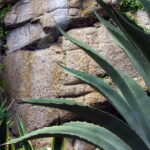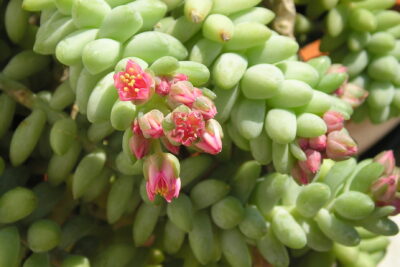
Exploring the Fascinating World of Tree-Like Succulent Plants

Succulent plants are known for their ability to store water in their leaves, stems, or roots, making them well-equipped to survive in arid environments. While most people are familiar with the popular succulent varieties such as cacti and aloe vera, there is a lesser-known group of succulents that resembles trees. These tree-like succulents have a unique and captivating appearance, with thick, woody stems and branches that give them the appearance of miniature trees.
We will delve into the world of tree-like succulent plants, exploring their characteristics, care requirements, and popular species. We will discuss how these plants have adapted to survive in their natural habitats and how they can be successfully grown as houseplants. Additionally, we will provide tips on propagation and maintenance to help you cultivate your own collection of these fascinating succulents. Whether you are a seasoned succulent enthusiast or new to the world of succulents, this article will provide you with valuable insights and inspiration for incorporating tree-like succulents into your indoor or outdoor garden.
- Learn about different types of tree-like succulent plants and their unique characteristics
- Provide proper care and maintenance tips for tree-like succulents to ensure their health and longevity
- Explore creative ways to incorporate tree-like succulents into your indoor or outdoor garden
- Discover the benefits of tree-like succulents in improving air quality and creating a calming environment
- Find out how to propagate tree-like succulents and expand your collection
- Identify common issues and pests that affect tree-like succulents and how to address them
- Learn about the cultural significance and symbolism of tree-like succulents in different cultures
- Connect with a community of succulent enthusiasts to share knowledge and experiences
- Gain inspiration from stunning examples of tree-like succulent arrangements and landscapes
- Frequently Asked Questions
Learn about different types of tree-like succulent plants and their unique characteristics
Tree-like succulent plants are a unique and fascinating addition to any garden or indoor space. With their tall, woody stems and lush foliage, these plants offer a striking visual appeal and can thrive in a variety of environments. In this article, we will explore some of the different types of tree-like succulent plants and delve into their unique characteristics.
1. Jade Plant (Crassula ovata)
One of the most popular tree-like succulent plants is the Jade Plant, also known as Crassula ovata. This plant features thick, fleshy leaves and can grow up to three feet tall. Its stem becomes woody as it matures, giving it a tree-like appearance. Jade Plants are native to South Africa and are often associated with good luck and prosperity.
2. Ponytail Palm (Beaucarnea recurvata)
The Ponytail Palm, scientifically known as Beaucarnea recurvata, is another tree-like succulent that adds a touch of elegance to any space. This plant is characterized by its long, slender leaves that cascade down from the top, resembling a ponytail. Despite its name, the Ponytail Palm is not a true palm but belongs to the agave family. It is native to Mexico and is known for its resilience and ability to thrive in dry conditions.
3. Madagascar Palm (Pachypodium lamerei)
The Madagascar Palm, or Pachypodium lamerei, is a tree-like succulent that originates from the arid regions of Madagascar. With its spiky, thorny stem and thick, succulent leaves, this plant is a true showstopper. The Madagascar Palm can reach heights of up to 20 feet, making it a captivating addition to any garden or landscape.
4. Dragon Tree (Dracaena draco)
The Dragon Tree, scientifically known as Dracaena draco, is a tree-like succulent that is native to the Canary Islands. This plant gets its name from its unique, dragon-like appearance, with its thick, scaly trunk and tufted foliage resembling a dragon's head. The Dragon Tree is known for its resilience and can adapt well to different light conditions, making it a popular choice for indoor spaces.
 Spiky Succulents: A Guide to Thorny and Spiky Types
Spiky Succulents: A Guide to Thorny and Spiky Types5. Euphorbia ingens
Another tree-like succulent to consider is Euphorbia ingens, also known as the Candelabra Tree or Cowboy Cactus. This plant features a tall, branching stem that resembles a candelabra, with clusters of small, green leaves at the top. The Euphorbia ingens is native to South Africa and can grow up to 30 feet tall, making it a striking focal point in any garden.
Tree-like succulent plants offer a unique and captivating appeal with their tall, woody stems and lush foliage. Whether you choose the Jade Plant, Ponytail Palm, Madagascar Palm, Dragon Tree, or Euphorbia ingens, these plants are sure to add a touch of elegance and natural beauty to your garden or indoor space. Explore the fascinating world of tree-like succulent plants and discover the joy of owning these remarkable specimens.
Provide proper care and maintenance tips for tree-like succulents to ensure their health and longevity
Tree-like succulent plants, also known as succulent trees, are a unique and fascinating addition to any garden or indoor space. With their striking resemblance to trees, these succulents bring a touch of nature and beauty to any environment. However, like any other plant, tree-like succulents require proper care and maintenance to thrive and flourish. In this article, we will explore some essential tips to help you provide the best care for your tree-like succulents, ensuring their health and longevity.
1. Light:
Tree-like succulents thrive in bright, indirect light. Place them near a window where they can receive ample sunlight, but avoid direct exposure to harsh afternoon sun. If you notice your succulent's leaves stretching or becoming leggy, it may be an indication of insufficient light. Consider providing additional artificial light sources, such as grow lights, to supplement their lighting needs.
2. Watering:
Proper watering is crucial for the health of your tree-like succulents. These plants are adapted to arid conditions and can store water in their leaves and stems. It is essential to allow the soil to dry out completely between waterings to prevent root rot. Water your succulents deeply, ensuring the excess water drains out from the drainage holes at the bottom of the pot. Avoid overwatering, as it can lead to root rot and other issues.
3. Soil:
Choosing the right soil is vital for tree-like succulents. They prefer well-draining soil that doesn't hold onto moisture for prolonged periods. Use a specialized succulent or cactus mix combined with perlite or pumice to improve drainage. This will prevent waterlogged soil and promote healthy root growth.
 Vibrant Blooming Outdoor Succulents: Discover Stunning Plants
Vibrant Blooming Outdoor Succulents: Discover Stunning Plants4. Temperature and Humidity:
Tree-like succulents thrive in warm temperatures ranging from 65°F to 85°F (18°C to 29°C). They can tolerate slightly cooler temperatures but may suffer damage if exposed to frost or freezing conditions. Additionally, succulents prefer low humidity levels, so ensure proper air circulation to prevent excessive moisture buildup around the plants.
5. Fertilization:
Providing your tree-like succulents with the right nutrients is essential for their growth and overall health. Use a balanced, water-soluble fertilizer specifically formulated for succulents. Apply the fertilizer sparingly during the active growing season, usually in spring and summer. Avoid over-fertilization, as it can lead to burnt leaves and other issues.
6. Pruning and Propagation:
Regular pruning helps maintain the shape and size of your tree-like succulents. Trim off any dead or damaged leaves and branches using clean, sharp scissors or pruning shears. Additionally, tree-like succulents are relatively easy to propagate. You can propagate them through stem or leaf cuttings, allowing you to expand your succulent collection or share them with fellow plant enthusiasts.
Conclusion:
Tree-like succulents are a captivating addition to any plant lover's collection. By providing them with the proper care and maintenance, you can ensure their health and longevity. Remember to consider their light, watering, soil, temperature, and humidity requirements. Additionally, regular pruning and propagation can help keep your tree-like succulents looking their best. With these tips in mind, you can create a thriving and beautiful succulent display that will be the envy of all who see it.
Explore creative ways to incorporate tree-like succulents into your indoor or outdoor garden
 Discover the Perfect Buddha Temple Succulent for Your Home
Discover the Perfect Buddha Temple Succulent for Your HomeTree-like succulents are a captivating addition to any garden, whether you have limited space indoors or a sprawling outdoor area. These unique plants, with their striking resemblance to miniature trees, are known for their ability to store water in their leaves, making them low-maintenance and drought-tolerant. If you're looking to add a touch of visual interest and natural beauty to your garden, here are some creative ways to incorporate tree-like succulents:
1. Create a succulent bonsai garden
Take your gardening skills to the next level by cultivating a succulent bonsai garden. Bonsai is a Japanese art form that involves growing and shaping miniature trees in containers. With tree-like succulents, you can create a stunning bonsai display by carefully pruning and shaping the plants to resemble miniature trees. Choose succulents with interesting trunk shapes, such as Crassula ovata (Jade plant) or Portulacaria afra (Elephant Bush), and experiment with different container styles and sizes to create a visually appealing arrangement.
2. Design a succulent vertical garden
If you have limited space, consider creating a vertical garden using tree-like succulents. Vertical gardens are not only space-saving but also add a unique aesthetic to any indoor or outdoor area. Choose tall and slender succulents like Aloe barbarae (Tree Aloe) or Euphorbia tirucalli (Pencil Tree) that can grow upright. Use a vertical planter or repurpose an old wooden pallet to create a vertical succulent garden. Plant the succulents in pockets or slots, and watch as they grow and cascade down the structure, creating a stunning living wall.
 Best Pink Flowering Ground Cover Succulents for Your Garden
Best Pink Flowering Ground Cover Succulents for Your Garden3. Build a succulent centerpiece
Add a touch of elegance to your dining table or outdoor patio by creating a succulent centerpiece using tree-like succulents. Select a shallow and wide container and fill it with a well-draining soil mix. Plant a variety of tree-like succulents, such as Aeonium arboreum (Tree Houseleek) or Beaucarnea recurvata (Ponytail Palm), in a cluster at the center of the container. Surround them with smaller succulents like Sedum morganianum (Burro's Tail) or Crassula perforata (String of Buttons) to add texture and visual interest. This stunning centerpiece will surely be a conversation starter during your gatherings.
4. Create a succulent hedge
If you're looking to add privacy or define boundaries in your outdoor space, consider creating a succulent hedge using tree-like succulents. Choose tall-growing succulents like Agave americana (Century Plant) or Yucca elephantipes (Spineless Yucca) and plant them in a row, leaving enough space for them to grow and spread. Regularly trim and maintain the succulents to encourage dense growth and create a living fence. Not only will this provide privacy, but it will also add a touch of natural beauty to your garden.
Tree-like succulents offer endless possibilities for creativity and can transform any garden into a mesmerizing oasis. Whether you choose to create a bonsai garden, a vertical succulent display, a captivating centerpiece, or a living hedge, these unique plants are sure to add a touch of fascination to your indoor or outdoor space.
 10 Unique Indoor Succulents That Resemble Hair for a Whimsical Touch
10 Unique Indoor Succulents That Resemble Hair for a Whimsical TouchDiscover the benefits of tree-like succulents in improving air quality and creating a calming environment
Succulent plants have gained immense popularity in recent years, with their unique shapes and vibrant colors adding a touch of beauty to any space. Among these fascinating succulents are tree-like varieties, which not only enhance the aesthetic appeal of your surroundings but also offer numerous benefits for your well-being.
Improving air quality
One of the remarkable qualities of tree-like succulents is their ability to purify the air. These plants, like their smaller succulent counterparts, have the astounding capacity to absorb harmful pollutants and release clean oxygen into the atmosphere. With their robust leaves and extensive root systems, tree-like succulents effectively filter the air, removing toxins and improving overall air quality in your home or office.
Research has shown that the presence of plants, including tree-like succulents, can reduce the concentration of volatile organic compounds (VOCs) in indoor spaces. VOCs are commonly found in various household products, such as paints, cleaning supplies, and furniture, and can have detrimental effects on our health. By incorporating tree-like succulents into your living or working environment, you can create a healthier and more breathable space for yourself and others.
Creating a calming environment
In addition to their air-purifying properties, tree-like succulents have a soothing effect on our minds and bodies. Their presence can promote feelings of tranquility, reduce stress levels, and improve overall mental well-being. The lush green foliage and unique branching patterns of these succulents create a sense of natural serenity, reminiscent of being surrounded by a peaceful forest.
Studies have indicated that exposure to nature, even in the form of indoor plants, can have a positive impact on our mental health. Incorporating tree-like succulents into your space can help create a calming environment, providing a respite from the hustle and bustle of daily life. Whether placed in your living room, office, or bedroom, these plants can serve as a reminder to slow down, breathe deeply, and appreciate the beauty of nature.
- Enhances air quality by absorbing pollutants
- Reduces the concentration of VOCs in indoor spaces
- Creates a calming and serene environment
- Promotes feelings of tranquility and reduces stress levels
- Improves overall mental well-being
So why not bring the captivating world of tree-like succulents into your life? Not only will they add a touch of elegance to your space, but they will also contribute to cleaner air and a more peaceful atmosphere. Explore the variety of tree-like succulents available and enjoy the numerous benefits they offer.
 Top 10 Tall Succulent Plants: Perfect for Indoor or Outdoor Use
Top 10 Tall Succulent Plants: Perfect for Indoor or Outdoor UseFind out how to propagate tree-like succulents and expand your collection
Tree-like succulents are a unique and captivating addition to any plant enthusiast's collection. With their slender trunks and branches adorned with lush foliage, these plants bring an exotic touch to both indoor and outdoor spaces. If you're passionate about succulents and want to learn how to propagate these tree-like wonders, you've come to the right place!
Why propagate tree-like succulents?
Propagating tree-like succulents not only allows you to expand your collection but also gives you the opportunity to share the joy of these fascinating plants with friends and family. By learning the art of propagation, you can create new plants from cuttings or offsets, ensuring the continuity of your favorite species.
Methods of propagation
There are several methods you can use to propagate tree-like succulents. The most common ones include:
- Leaf cuttings: This method involves taking a leaf cutting from the parent plant and allowing it to develop roots before planting it in a well-draining soil mix.
- Stem cuttings: By cutting a stem section from the parent plant and allowing it to callus before planting it in a suitable growing medium, you can encourage the development of a new plant.
- Offsets or pups: Some tree-like succulents produce offsets or pups, which are small plants that grow from the base of the parent plant. These can be carefully removed and replanted to create new individuals.
Propagation tips
When propagating tree-like succulents, it's essential to keep a few key tips in mind:
- Choose healthy parent plants: Select strong and disease-free parent plants to ensure the success of your propagation efforts.
- Provide the right environment: Tree-like succulents thrive in bright indirect light and well-draining soil. Make sure to provide the optimal conditions for your propagated plants.
- Be patient: Succulent propagation can take time. Keep a close eye on your cuttings or offsets and provide proper care as they develop roots and grow into new plants.
- Experiment and have fun: Propagation is an art, and every plant may respond differently. Don't be afraid to try various methods and techniques to find what works best for your tree-like succulents.
With these tips and methods in mind, you can embark on a rewarding journey of propagating tree-like succulents. Expand your collection, share the beauty of these plants with others, and unlock the wonders of nature's remarkable creations!
Identify common issues and pests that affect tree-like succulents and how to address them
Tree-like succulents are a unique and captivating addition to any plant collection. With their striking resemblance to trees, these succulents bring a touch of nature indoors. However, like any other plant, tree-like succulents can face certain issues and be susceptible to pests. It is crucial for succulent enthusiasts to identify these problems and take necessary measures to address them effectively. In this article, we will explore some of the common issues and pests that can affect tree-like succulents and provide helpful solutions.
 Exploring Fred Ives: A Specialist in Succulent Cultivation
Exploring Fred Ives: A Specialist in Succulent Cultivation1. Overwatering
Overwatering is one of the most common issues faced by succulent owners, and tree-like succulents are no exception. These plants have adapted to survive in arid conditions, storing water in their leaves and stems. When they are overwatered, their roots can become waterlogged, leading to root rot and eventual death.
To prevent overwatering, it is essential to understand the watering needs of your tree-like succulent. Allow the soil to dry completely between watering sessions. Ensure that the pot has proper drainage to prevent water from accumulating at the bottom. Additionally, consider using a well-draining soil mix specifically designed for succulents.
2. Sunburn
Tree-like succulents thrive in bright sunlight, but excessive exposure to direct sunlight can lead to sunburn. Sunburn appears as brown or yellow patches on the leaves, and in severe cases, it can cause permanent damage to the plant.
To protect your tree-like succulent from sunburn, gradually acclimate it to direct sunlight by providing partial shade initially. Place the plant in a location that receives morning or evening sun rather than harsh midday sun. If you notice signs of sunburn, move the plant to a shadier spot and trim off any damaged leaves.
3. Pest Infestations
Tree-like succulents are not immune to pest infestations. Common pests that can affect these plants include mealybugs, aphids, and scale insects. These pests feed on the sap of the succulents, causing stunted growth, yellowing leaves, and even plant death if left untreated.
To combat pest infestations, regularly inspect your tree-like succulents for signs of pests. If you spot any, isolate the affected plant to prevent the infestation from spreading. Manual removal of pests using a cotton swab dipped in rubbing alcohol can be effective for small infestations. For larger infestations, consider using organic insecticidal soaps or horticultural oils, following the instructions provided.
4. Nutrient Deficiencies
Tree-like succulents require specific nutrients to thrive. Nutrient deficiencies can manifest as pale or discolored leaves, stunted growth, and overall poor health. Common nutrient deficiencies in succulents include nitrogen, phosphorus, and potassium.
 Top Succulents with White Hair: A Guide to the Best Varieties
Top Succulents with White Hair: A Guide to the Best VarietiesTo address nutrient deficiencies, it is important to provide your tree-like succulent with a balanced fertilizer formulated for succulents. Follow the recommended dosage and application instructions provided by the manufacturer. Additionally, consider repotting your succulent every 1-2 years to refresh the soil and replenish nutrients.
By being aware of these common issues and pests and taking proactive measures to address them, you can ensure the health and vitality of your tree-like succulent plants. Remember to observe your plants closely, provide the appropriate care, and enjoy the beauty and uniqueness they bring to your indoor space.
Learn about the cultural significance and symbolism of tree-like succulents in different cultures
Tree-like succulent plants, also known as succulent trees or tree-form succulents, have captivated people all around the world with their unique beauty and adaptability. These fascinating plants have a cultural significance and symbolism in various cultures, making them even more intriguing to explore.
1. Cultural Significance
In many cultures, tree-like succulents hold significant value and are often associated with various meanings. For instance:
- In Chinese culture, the bonsai-like appearance of tree-like succulents represents longevity, prosperity, and harmony. These plants are believed to bring good fortune and positive energy to the home.
- In Native American traditions, certain tree-like succulents are considered sacred and are used for medicinal and ceremonial purposes. They are believed to have healing properties and are used in rituals to connect with spiritual beings.
- In African folklore, tree-like succulents, such as the Euphorbia species, are associated with protection against evil spirits and are often planted near homes and villages for their warding off qualities.
2. Symbolism
Tree-like succulents also carry symbolic meanings that vary across cultures. Some common symbolisms include:
- Strength and resilience: The ability of these plants to thrive in harsh conditions, such as arid climates, symbolizes strength, resilience, and the ability to overcome challenges.
- Connection to nature: Tree-like succulents, with their tree-like appearance, symbolize a connection to nature and the importance of preserving our environment.
- Growth and transformation: The growth patterns of tree-like succulents, including their ability to grow new branches and leaves, symbolize personal growth, transformation, and adaptability.
Exploring the cultural significance and symbolism of tree-like succulents not only provides a deeper understanding of these plants but also offers a unique perspective on the diverse ways different cultures perceive and value nature.
 Top 10 Succulents That Flourish in Partial Sunlight: A Guide
Top 10 Succulents That Flourish in Partial Sunlight: A GuideAre you a succulent lover? Do you find yourself fascinated by the unique beauty and diversity of tree-like succulent plants? If so, you're not alone! Join a vibrant community of succulent enthusiasts who share your passion and explore the captivating world of these remarkable plants.
Connecting with like-minded individuals who appreciate the beauty and intricacies of tree-like succulents can be a truly enriching experience. By joining a community of succulent enthusiasts, you gain access to a wealth of knowledge and experiences that can help you expand your understanding and foster a deeper appreciation for these plants.
Whether you are a seasoned succulent enthusiast or just starting your journey, the community provides a platform for sharing tips, tricks, and advice on how to care for and cultivate tree-like succulents. From discussions about ideal growing conditions to recommendations for the best varieties to add to your collection, there is always something new to learn and discover.
Exchange Ideas and Knowledge
One of the most significant benefits of joining a community of succulent enthusiasts is the opportunity to exchange ideas and knowledge. The community members are a diverse group of individuals with a wide range of experiences and expertise. Through engaging discussions and interactions, you can tap into this collective wisdom to expand your understanding of tree-like succulents.
Whether you have questions about propagation techniques, pest control, or even displaying your succulent collection, the community is there to provide guidance and support. By sharing your own experiences, you can also contribute to the collective knowledge and help others who may be facing similar challenges.
Discover New Varieties and Trends
The world of succulents is constantly evolving, with new varieties and trends emerging regularly. By connecting with a community of succulent enthusiasts, you can stay up to date with the latest developments and discover new and exciting tree-like succulents to add to your collection.
Members of the community often share their experiences with different varieties, showcasing their unique features and characteristics. Through these shared experiences, you can gain insights into which varieties thrive in different climates, how to care for specific species, and even where to find rare and sought-after tree-like succulents.
 Exploring the Beauty of Sedum Sunset Succulent: A Comprehensive Guide
Exploring the Beauty of Sedum Sunset Succulent: A Comprehensive GuideFind Inspiration and Support
Being a part of a community of succulent enthusiasts not only provides valuable knowledge and resources but also offers inspiration and support. Whether you're looking for ideas to enhance the aesthetic appeal of your succulent garden or seeking encouragement during challenging times, the community is there to uplift and inspire you.
By sharing photos of your own tree-like succulents and admiring the beauty of others' collections, you can find inspiration for new planting arrangements, creative displays, and unique ways to showcase the inherent beauty of these remarkable plants. Additionally, the support and encouragement from fellow members can motivate you to overcome obstacles and achieve success in your succulent journey.
So, why wait? Join a community of succulent enthusiasts today and embark on an exciting journey through the fascinating world of tree-like succulent plants!
Gain inspiration from stunning examples of tree-like succulent arrangements and landscapes
Succulents are known for their unique and diverse forms, but one particular type that stands out is the tree-like succulent. These fascinating plants add a touch of elegance and beauty to any garden or indoor space. If you're looking for inspiration to create stunning succulent arrangements or landscapes, look no further. We've gathered some exceptional examples that will leave you in awe.
1. Awe-Inspiring Succulent Trees
Imagine a miniature tree with succulent leaves. These succulent trees are a true testament to nature's creativity. They come in various shapes and sizes, mimicking the appearance of real trees. Some examples include the Aeonium arboreum 'Zwartkop,' a striking succulent tree with dark burgundy foliage, and the Crassula ovata 'Gollum,' known for its finger-like leaves that resemble the branches of a tree.
2. Captivating Succulent Landscapes
If you have a larger space to work with, consider creating a succulent landscape that resembles a mini desert or oasis. Combine different tree-like succulents with smaller ground cover succulents to add depth and texture. Opt for varieties such as the Euphorbia tirucalli 'Sticks on Fire,' which features vibrant red and orange foliage, or the Dracaena draco, commonly known as the Dragon Tree, with its unique upright growth habit.
3. Striking Vertical Succulent Gardens
Vertical gardens are becoming increasingly popular, and tree-like succulents can be a fantastic addition to these living walls. Use a variety of succulents with different heights and colors to create an eye-catching display. Consider using the Kalanchoe luciae, also known as the Paddle Plant, with its paddle-shaped leaves that stack up like branches, or the Sansevieria cylindrica, which features tall cylindrical leaves that resemble bamboo shoots.
4. Enchanting Bonsai Succulents
For those who appreciate the art of bonsai, incorporating tree-like succulents into your bonsai collection is a fascinating idea. The Crassula arborescens 'Silver Dollar Jade' is a popular choice, as it can be trained to grow in a bonsai style, with its round, fleshy leaves adding an interesting touch. Another option is the Portulacaria afra, commonly known as the Elephant Bush, which can be pruned and shaped into bonsai-like forms.
By exploring the world of tree-like succulent plants, you open up a world of possibilities for creating stunning arrangements and landscapes. Whether you prefer awe-inspiring trees, captivating landscapes, striking vertical gardens, or enchanting bonsai, there is a tree-like succulent that will fit your style and inspire your creativity.
Frequently Asked Questions
1. What are tree-like succulent plants?
Tree-like succulent plants are a type of succulent that have a woody stem and grow tall like a tree. They often have thick, fleshy leaves or stems that store water.
2. Do tree-like succulent plants require special care?
Tree-like succulent plants generally require similar care to other succulents. They need well-draining soil, plenty of sunlight, and infrequent watering.
3. Can tree-like succulent plants be grown indoors?
Yes, tree-like succulent plants can be grown indoors as long as they receive sufficient sunlight. Placing them near a sunny window or using grow lights can help them thrive.
4. How do I propagate tree-like succulent plants?
Tree-like succulent plants can be propagated through stem or leaf cuttings. Simply let the cuttings callus over for a few days and then plant them in well-draining soil.
If you want to read more articles similar to Exploring the Fascinating World of Tree-Like Succulent Plants, you can visit the Varieties and Colors category.






You Must Read